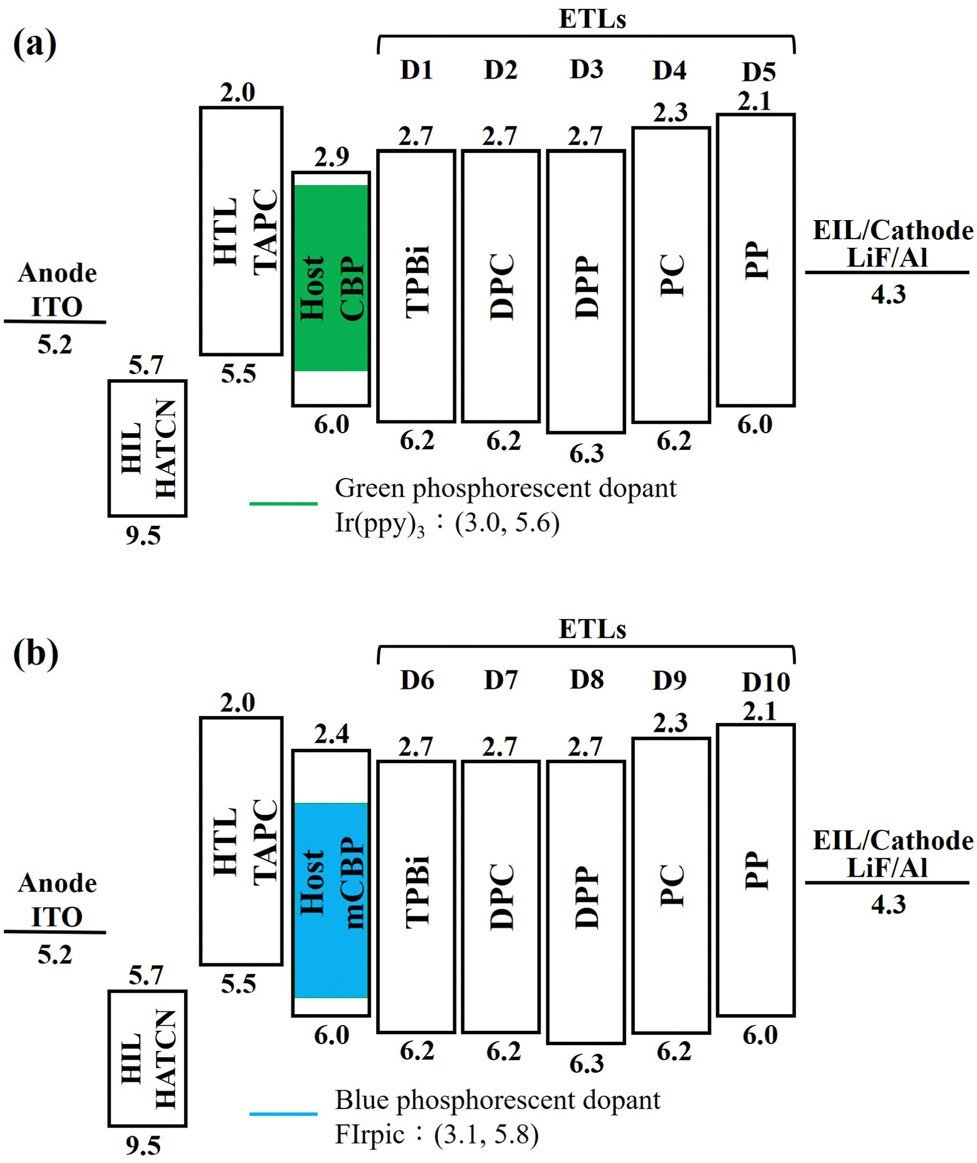Seven member ring based electron transporting materials for high-efficiency OLEDs
Kuo-Hsien Chou, Tun-Hao Chen, Xian-Qing Huang,a Chia-Sheng Huang, Chih-Hao Chang, Chien-Tien Chen and Jwo-Huei Jou
Mater. Adv., 2023,4, 1335-1344
DOI: 10.1039/d2ma00974a
Organic light-emitting diodes (OLEDs) are increasingly used in display technology and lighting, with a need for better electron-transporting materials (ETMs) for higher efficiency and longer lifetimes. Researchers synthesized four seven-member-ring-based ETMs, finding that using 2′,12-di(pyridin-4-yl)spiro[dibenzo[3,4:5,6]cyclohepta[1,2-b]pyridine-9,9′-fluorene] (DPP) as an ETM increased green OLED efficiency by 39% and device lifetime by 43% compared to 1,3,5-tris(N-phenylbenzimidazol-2-yl)benzene (TPBi).
The improvements were attributed to DPP's higher electron mobility and deeper highest occupied molecular orbital (HOMO) level. However, DPP was unsuitable for blue phosphorescent emitters, but another synthesized ETM, 4-(spiro[dibenzo[3,4:5,6]cyclohepta[1,2-b]pyridine-9,9′-fluoren]-12-yl)benzonitrile (PC), increased blue OLED efficiency by 46% compared to TPBi.
The recombination rate of the studied OLEDs were obtained by using electrical simulation software SETFOS.

